2000 Promises to Keep
2000 Promises to Keep
On Saturday afternoon, a friend who is a Chartered Accountant circulated a photograph of a form that we would have to fill to exchange 2,000 rupee notes for notes of a smaller denomination. For most of us, this form is only of academic interest, since banks have not been dispensing 2,000 rupee notes for several years now.
Nevertheless, I was irked. The ‘make-work’ attitude of bureaucrats has been a constant bugbear, and I don’t see why I should have to fill up a form to change one colour of legal tender for another. I asked this question on Twitter, along with the form, and swiftly learned that I was not the only one who was irked.
As of breakfast this morning, 750,000 people had seen this tweet. My average tweet is seen by about 1,000 people, so the cascade of interest in this message doesn’t come from my loyal following, but from a wide-spread frustration with being pushed around by public servants.
Many of the comments on my timeline were dripping with sarcasm,
Others recalled the horrors of demonetisation, and posted photographs of people waiting in line to draw their own cash in 2016. The empathy of this tweet was very moving:
“Why exchange?”, I ask myself. RBI states that the 2000 rupee note will continue to be legal tender, without any sunset date. Paragraph 4 of its circular regarding the withdrawal of 2000 rupee notes is categorical:
4. The banknotes in ₹2000 denomination will continue to be legal tender.
If this is the case, then why make arrangements for exchange, draft requisition slips for us to exchange our money, set limits on exchange? A physician made this harsh diagnosis:
Saying that 2000 rupee notes are legal, but signalling that they are less legal than others, suggests that the RBI is being less than transparent with its policy objective. To be fair, the RBI circular does include a mild hint:
“This denomination is not commonly used for transactions…”
As RSJ wrote in ‘Anticipating the Unintended’* this morning,
“...there was also an allusion to the ₹2000 notes being often found by various investigative agencies in their haul of black money or frauds. So, somewhere there is a view that withdrawing these notes would smoke these fraudsters out.”
I have little doubt that 2000 rupee notes were being stashed away in large hoards. The RBI circular says that 2000 rupee notes account for 10% of the currency in circulation, but the ordinary citizen wouldn’t know this - the pink notes have been rarely sighted in public. Several tweets said something had changed over the last few weeks:
Yes, the well-connected get tipped off. And, didn’t we learn in 2016 that black money is not largely held as cash, but invested in real estate, shares, gold or foreign bank balances? That deligitimising your own currency doesn’t smoke out any hoarders, and only forces the innocent into lines?
I think the answer to these rhetorical questions is to be found in the lack of trust in our system, to the widespread presumption of guilt and suspicion, captured in this tweet:
Ah yes, the greater good, to be served by getting people to stand in queues. Thankfully, there is more than a little scepticism about this form of public policy:
This morning, I learned that the form, the so-called annexure III that set off this little storm, has now been withdrawn by the State Bank of India, India’s largest bank:
Many thousands of trees saved. Thank the cosmos for some vestiges of common sense for the common good.
As for the lack of trust in our system, I suspect we’ll be talking about it for a long, long time.
*https://substack.com/search/Anticipating%20the%20Unintended?searching=publication


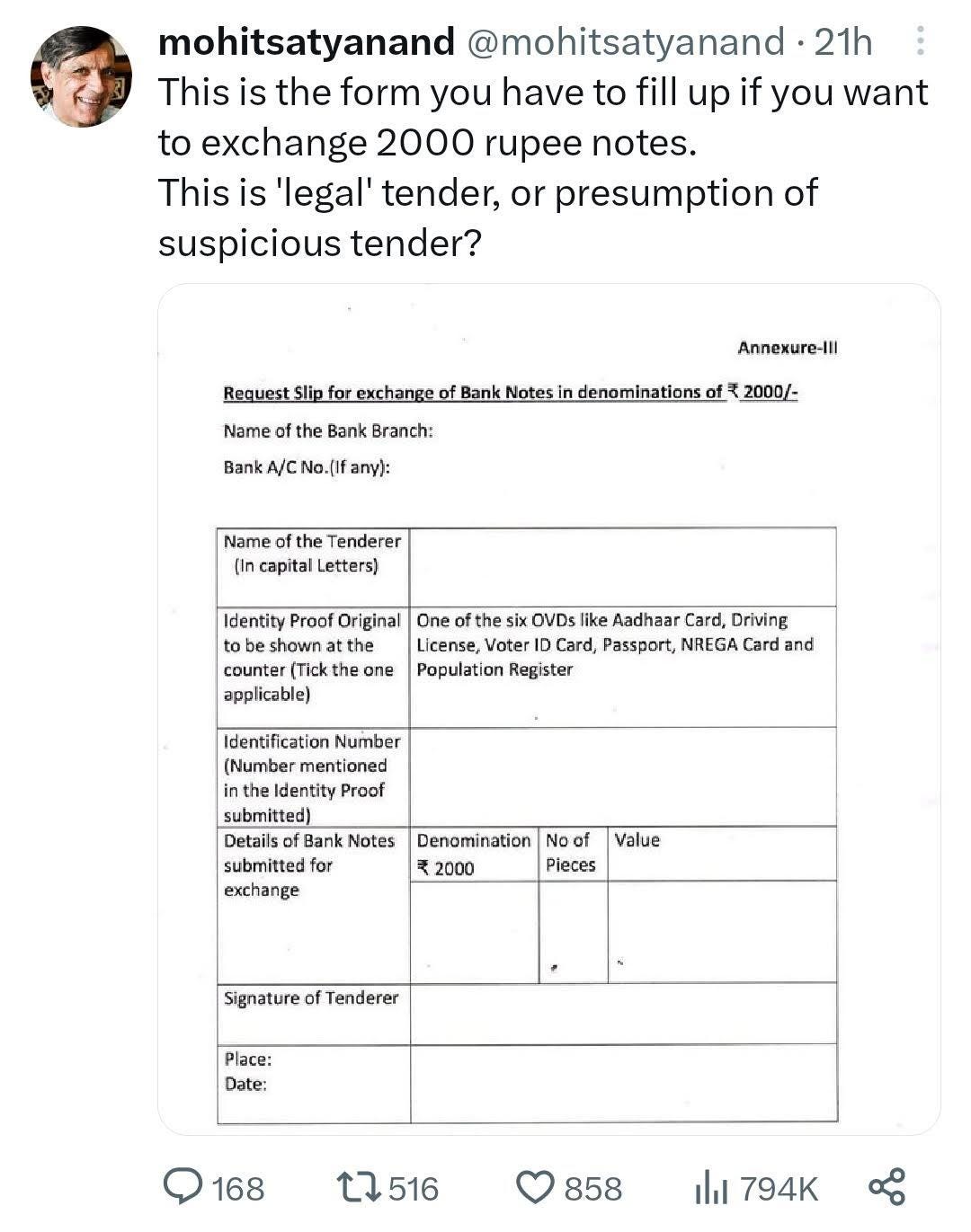

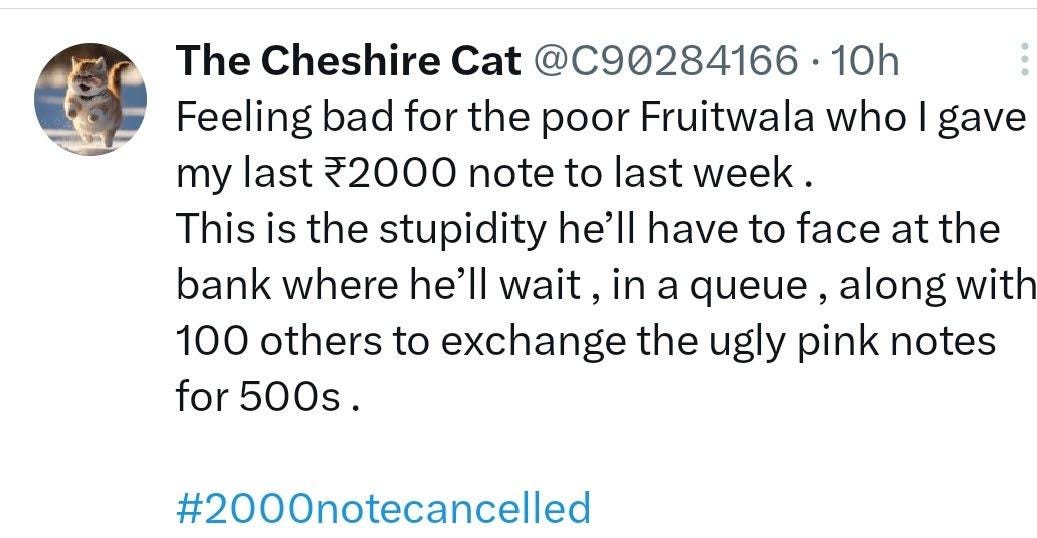
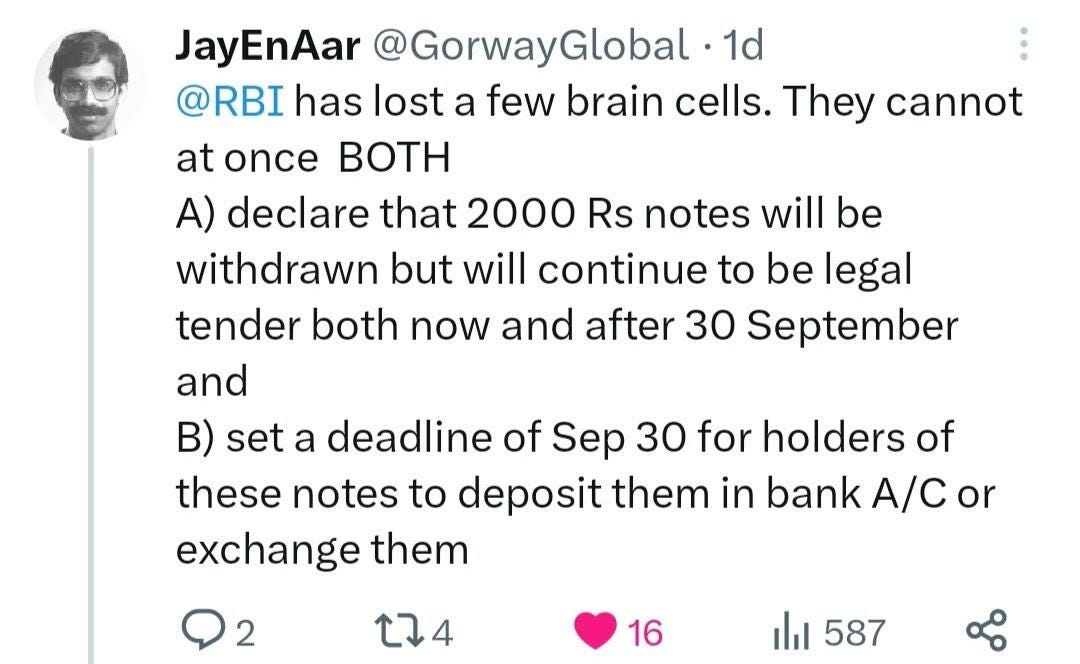
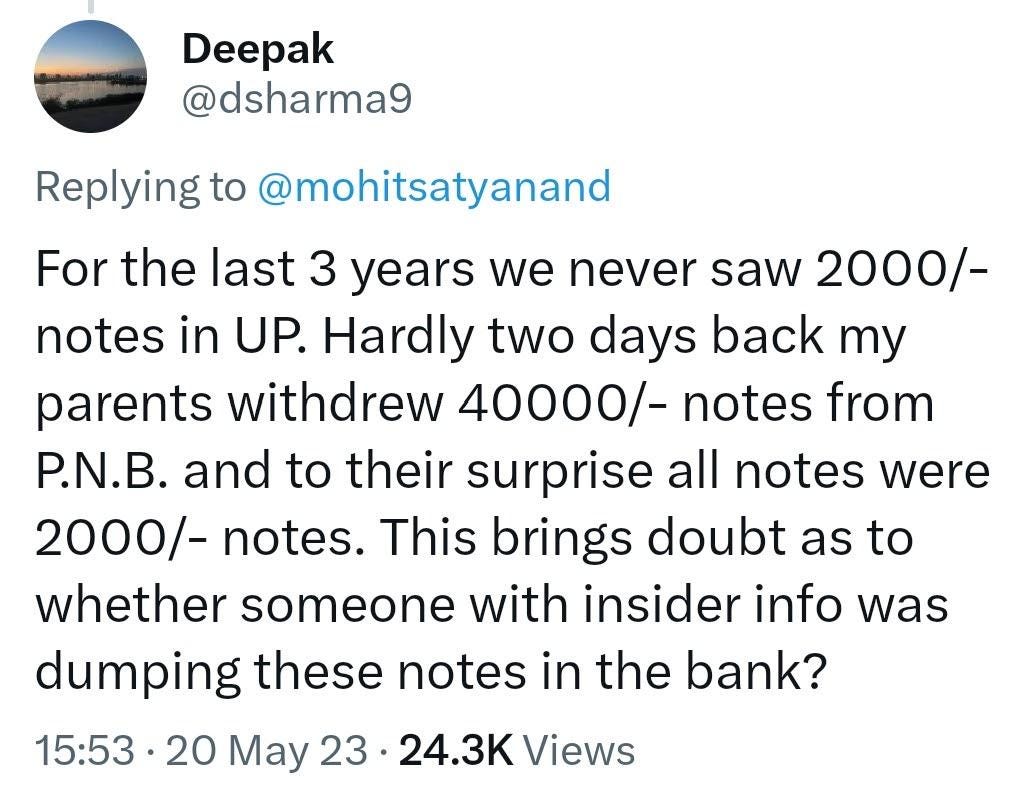
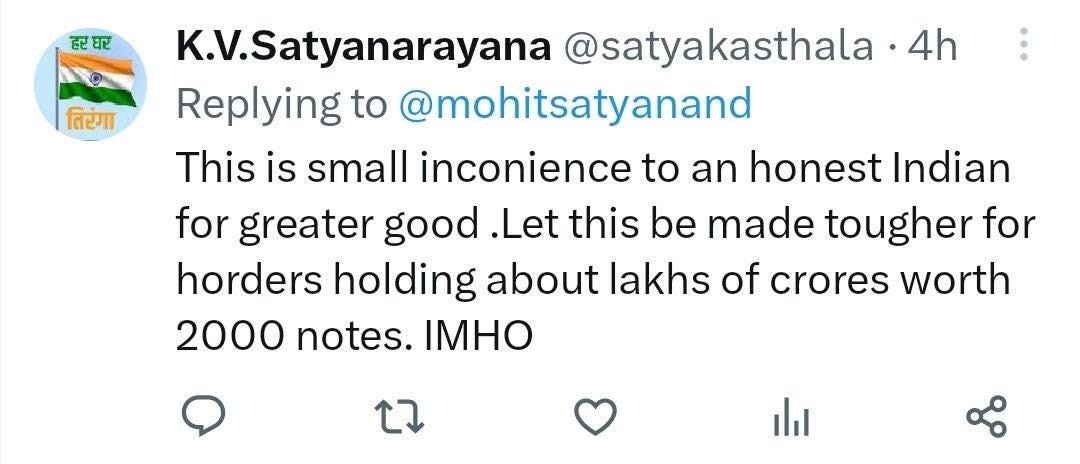
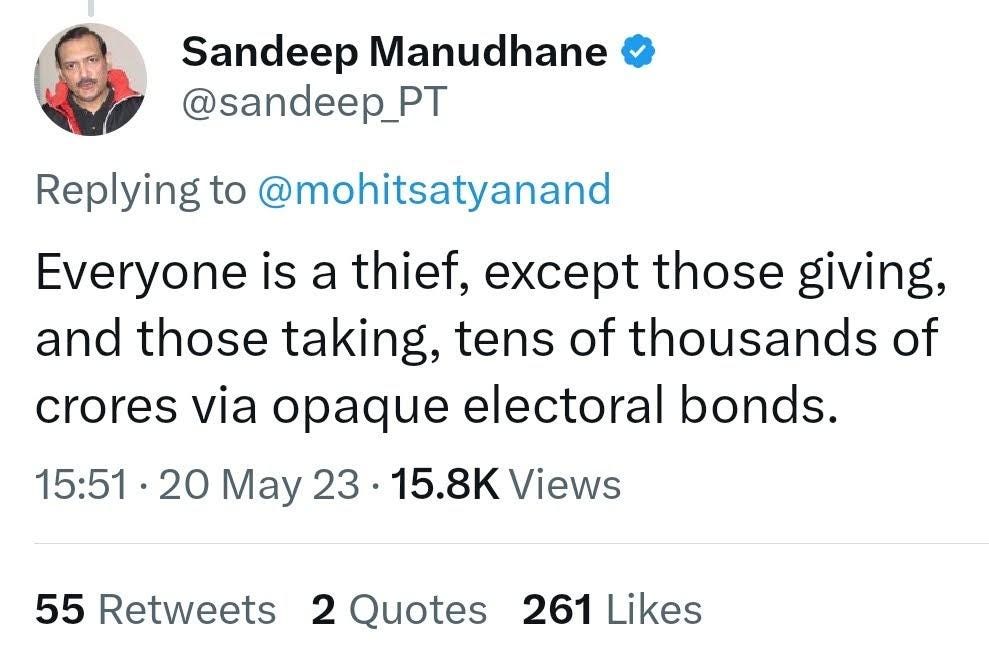

"Sorrowing Rules" is a wonderful epithet for the books our babus craft.
Andher Nagri, chaupat Raja...